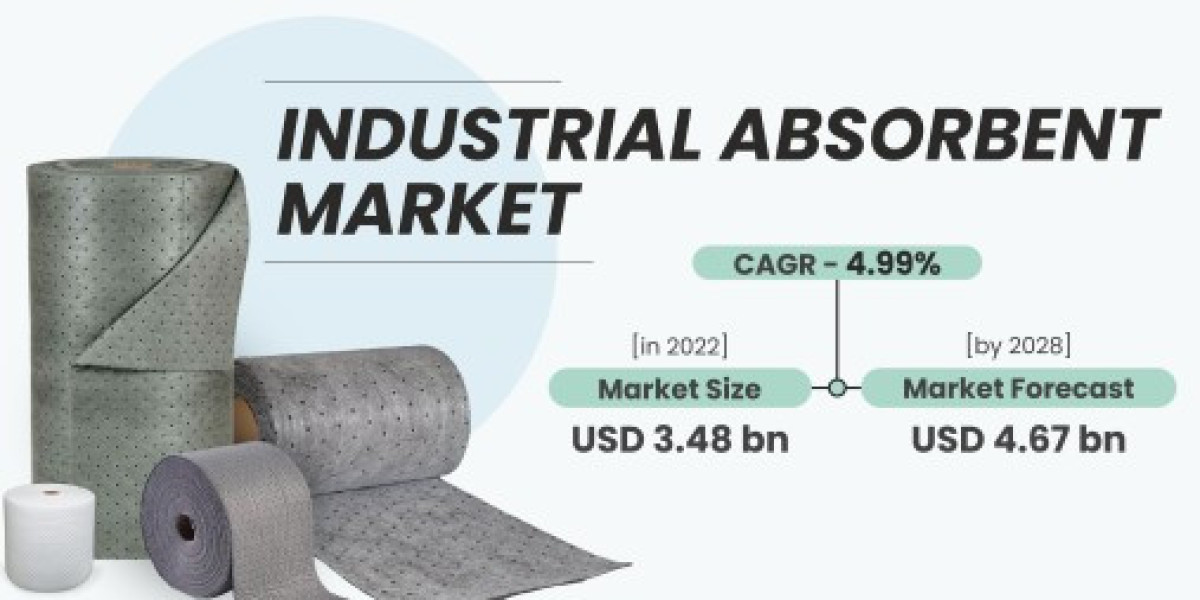The industrial absorbent market has witnessed significant growth in recent years, driven by the increasing awareness of environmental safety and stringent regulations regarding spill management. Industrial absorbents are materials designed to absorb and retain liquid spills, including oils, chemicals, and other hazardous substances, making them crucial for maintaining workplace safety and environmental protection.
The industrial absorbent market is estimated to grow from USD 3.48 billion in 2022 to USD 4.67 billion by 2028 at a CAGR of 4.99% during the forecast period.
Market Trends and Drivers
One of the primary drivers of the industrial absorbent market is the growing emphasis on environmental regulations and the need for efficient spill management solutions. Regulatory bodies such as the Environmental Protection Agency (EPA) and the Occupational Safety and Health Administration (OSHA) have implemented stringent guidelines for spill control and containment, compelling industries to adopt reliable absorbent solutions.
Additionally, the rise in industrial activities, particularly in sectors such as oil and gas, chemical manufacturing, and automotive, has led to an increased demand for industrial absorbents. The oil and gas industry, in particular, requires high-performance absorbents to manage oil spills effectively, both onshore and offshore. The chemical industry also relies heavily on absorbents to handle hazardous chemical spills, ensuring the safety of workers and the environment.
Types of Industrial Absorbents
Industrial absorbents can be broadly classified into three categories: organic, inorganic, and synthetic. Organic absorbents, such as sawdust, peat moss, and cotton, are biodegradable and environmentally friendly. Inorganic absorbents, including clay, perlite, and vermiculite, are known for their high absorption capacity and cost-effectiveness. Synthetic absorbents, made from materials like polypropylene, offer superior performance and are widely used in applications requiring high absorbency and durability.
Key Players and Competitive Landscape
The industrial absorbent market is highly competitive, with several key players striving to enhance their product offerings and expand their market presence. Some of the prominent companies operating in this market include:
- 3M Company: Known for its innovative absorbent products, 3M offers a wide range of solutions for spill control and cleanup.
- New Pig Corporation: A leading provider of absorbent products, New Pig Corporation is recognized for its high-quality and durable absorbents.
- Brady Corporation: Brady Corporation specializes in spill containment and control products, offering a comprehensive range of absorbents for various industrial applications.
- Oil-Dri Corporation of America: This company is renowned for its high-performance absorbent products, particularly in the oil and gas industry.
Future Outlook
The future of the industrial absorbent market looks promising, with continued advancements in absorbent technology and a growing focus on sustainability. The development of biodegradable and eco-friendly absorbents is expected to gain traction, driven by the increasing demand for environmentally responsible solutions. Moreover, the expansion of industrial activities in emerging economies presents significant growth opportunities for market players.
In conclusion, the industrial absorbent market is poised for robust growth, driven by regulatory requirements, industrial expansion, and technological advancements. Key players are likely to focus on innovation and sustainability to maintain their competitive edge and meet the evolving needs of various industries.
To study in detail about the market trends, Register here: https://www.stratviewresearch.com/Request-Sample/1139/industrial-absorbent-market.html#form


